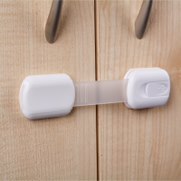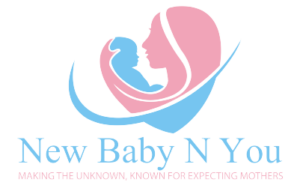It’s like to start baby proofing your home. We’ve got your all-in-one baby proofing checklist.
It’s never too early to start baby proofing your home. Although one of the less exciting tasks to do when you’re expecting, making your home safe for a new baby is essential. Plus, preparing early, means you can spend more time bonding with your newborn before they start crawling, exploring, and (likely) wreaking havoc all over your home.
On paper, baby proofing might sound simple. But many of us overlook or underestimate the extent you need to go to to make your home safe for your new addition. In this blog post, we’re diving deep into how to babyproof your home in the right way.
What is baby proofing?
You see those two lines on the pregnancy test, and you know your life is about to change forever. You’re swept away with conversations about gender, names, breast pumps, baby showers and more. But not one person has asked you about baby proofing your home. Why? Probably because baby proofing isn’t fun. It’s time-consuming and can be anxiety-inducing and stressful. If you’re a new or expecting parent confused about baby proofing and what exactly this means, don’t worry. You’re not the only one. And the NBNY team is here to guide you through the process.
Baby proofing is making your home safe for your new baby. Although you might not be aware, your home poses a multitude of hazards for an inquisitive baby. And as a parent, it’s your job to remove these risks and keep your baby safe.
Baby proofing checklist
We’ve put together a baby proofing checklist for you to work through and make sure your house is safe and ready for your new arrival.
Baby Proofing the kitchen
Let’s begin with the biggest task of all; baby proofing the kitchen. Your kitchen is home to an assortment of sharp objects, hard surfaces, and dangerous machinery. Although it isn’t a location your baby is likely to spend a lot of time in, you still need to add it to your babyproof checklist.
Begin by putting all potential hazards away in cupboards and draws (knife block, blender, even your ice cream scoop). Next, secure these storage spaces with safety catches. Get into the habit of unplugging appliances still on display when not using them (kettle, toaster, coffee machine). To be extra cautious you can cover these plug sockets with covers. Add knob covers and a hob guard to your oven. And make sure no pots or pans are in reach.
If you have lots of corners in your kitchen (at the end of working surfaces or tables) attach corner guards to ensure these aren’t sharp if your baby comes in contact with one. We highly suggest you babyproof all the corners in your home.
Baby proofing the baby’s room
One place your little one will be spending a lot of time is their room. And so, you need to make sure their bedroom is baby proofed in advance of their arrival. Begin with the crib. Check your crib meets the current safety standards in your location and there is no more than 6 cm distance between each bar. If you’re building the crib at home, make sure you use the parts provided, making your baby’s crib shouldn’t be a DIY situation. Once the crib is safely built, you need to fit the mattress. Your baby’s mattress should fit perfectly with no gaps between it and the frame. Finally, make sure your baby’s bed is away from any external items. Position it away from plugs and chords, and keep stuffed toys and loose blankets out.
Baby Proofing the bathroom
Bath time is a great opportunity to bond with your baby, but you need to ensure it’s a safe environment for your baby to be in. The first step in baby proofing the bathroom is using a non-slip rubber bathmat at all times. Before your baby gets to splash around, check the water temperature. Your baby’s skin is very sensitive, so water must always be around 98.6° F to 100° F (37° to 38° C). Tap guards and toilet lid locks are a good way to keep your baby from exploring things they shouldn’t be. Finally, always keep your bathroom door locked when not in use. Your baby should never be in the bathroom unaccompanied.
Extra baby proofing tips
● Cover all plug sockets
● Tie up wires and ensure they’re out of reach
● Keep all small or potentially dangerous objects out of reach
● Add restrictors to your windows
● Use door stops
● Install baby gates
● Add finger guards to door hinges.
Baby proofing your home is a big task, but it’s absolutely imperative you do it. By baby proofing your kitchen, bathroom, nursery, and other rooms in your house you can guarantee your baby’s safety when they start exploring. Plus, having a fully baby proofed home puts your mind at ease, giving you time to bond with your baby without worry. Start your new journey off the right way by baby proofing your home as soon as possible.


